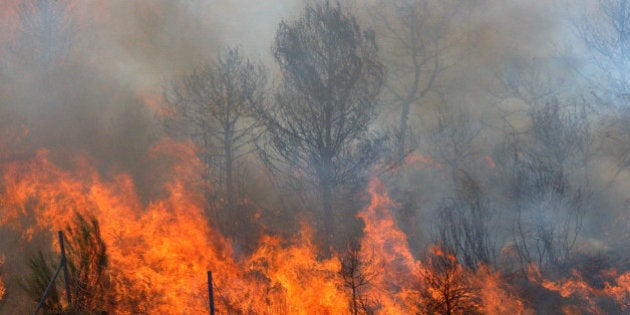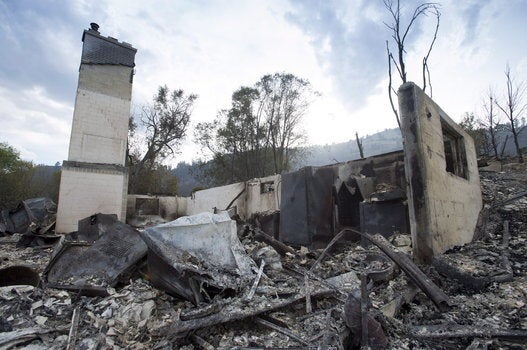
Every summer heavily forested areas leave animals and humans alike susceptible to wildfires. By July of this year, British Columbia saw over 189 active fires burning -- a number that Professional Organizers in Canada says is too high to not be prepared.
"Every family should organize an emergency kit and an emergency plan that they implement with their children -- especially those living in heavily forested areas," says Marie Potter, Marketing Director for Professional Organizers in Canada. "It takes less than a day, but can mean a lifetime."
Potter also says that these kinds of kits can be used in the event of other natural disasters. "We don't just see wildfires in Canada. We have extreme snowstorms, power outages and sometimes tornadoes. These kinds of kits are about being prepared and having that comfort," says Potter.
To help Canadians stay safe all year round, we are sharing our top tips for organizing and implementing emergency kits.
Develop an emergency kit that can last 72 hours
In your kit, have necessary items such as:
- Prescriptions, special medication and glasses
- Copies of your essential documents: passports, birth certificates, SIN number, license and health cards
- A change of clothes
- Water and food
- An LED flashlight and extra batteries
- Cell phone, battery-operated cell phone charger and lithium batteries
- Mess kit
- Moist toilettes, toilet paper, garbage bags and ties for personal sanitation
- First aid kit
- Cash
When you make your kit, don't forget about your pets! Always have an extra leash or pet bag, and pack extra water and food.
Have an evacuation strategy
In the event of a wildfire, you will want to have at least two routes that you and your family can use to safely get away from your home. You should also practice these routes with your children, but not in a way that can scare them. Make these routes a part of your family walks or regular bike trails.
It is also recommended to make a list of friends or family that you can contact or stay with if your home is not safe. Be sure to have their contact numbers in a notebook in your emergency kit, and let them know that they are a part of your evacuation plan.
If you don't have family or friends that you can stay with, make a note of where the nearest emergency shelter is.
Organize necessary items so that they're easy to find
Keep your emergency kit in an area of your home that you won't forget. This area should also be easily accessible -- near a door, near your bedside table, or even in your car. Once you find that spot, make sure that everyone in your family knows where it is.
Have the right policies and documents in place
Make sure you have insurance that can assist you if you lose any of your belongings. Know what your deductible is, and always keep a copy of your insurance coverage.
Wildfires and natural disasters are difficult to cope with, but being prepared is half the battle. To find an organizer who can help you make an emergency kit and plan, visit www.organizersincanada.com
ALSO ON HUFFPOST:
